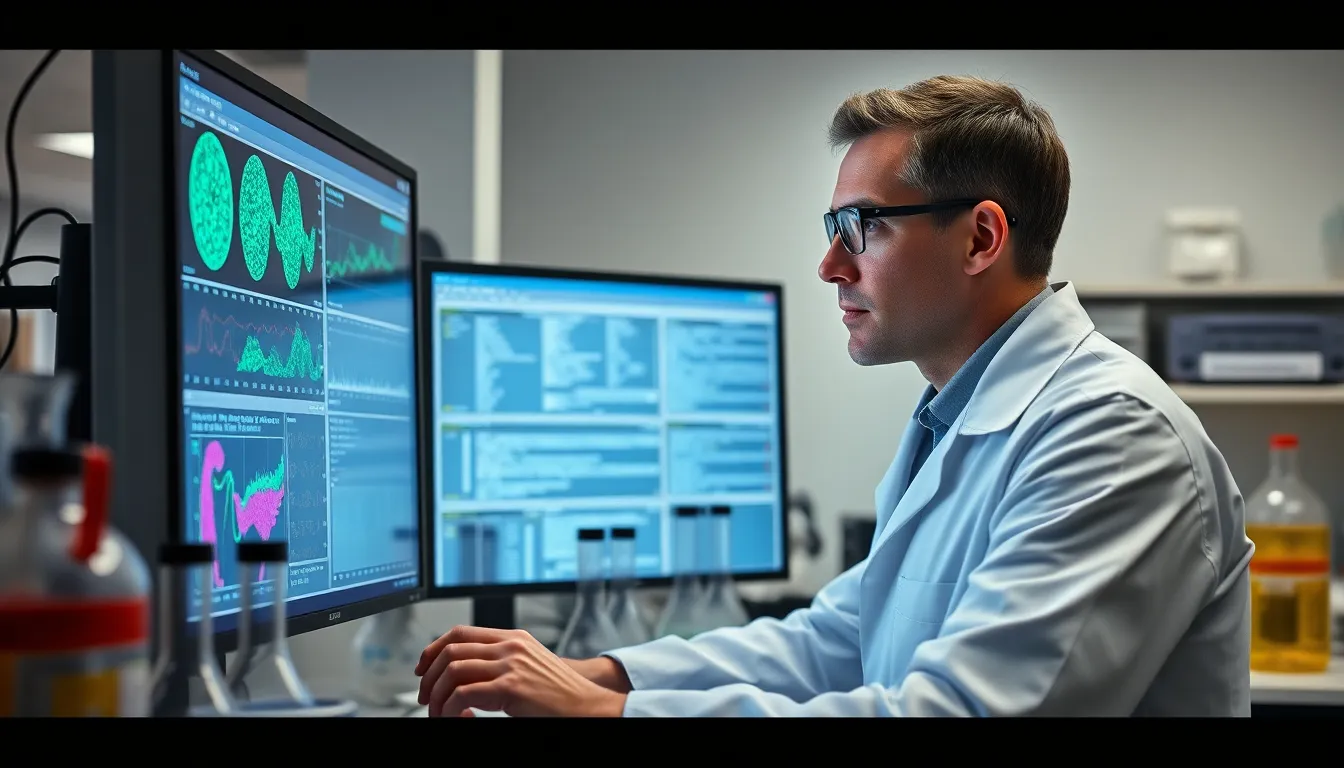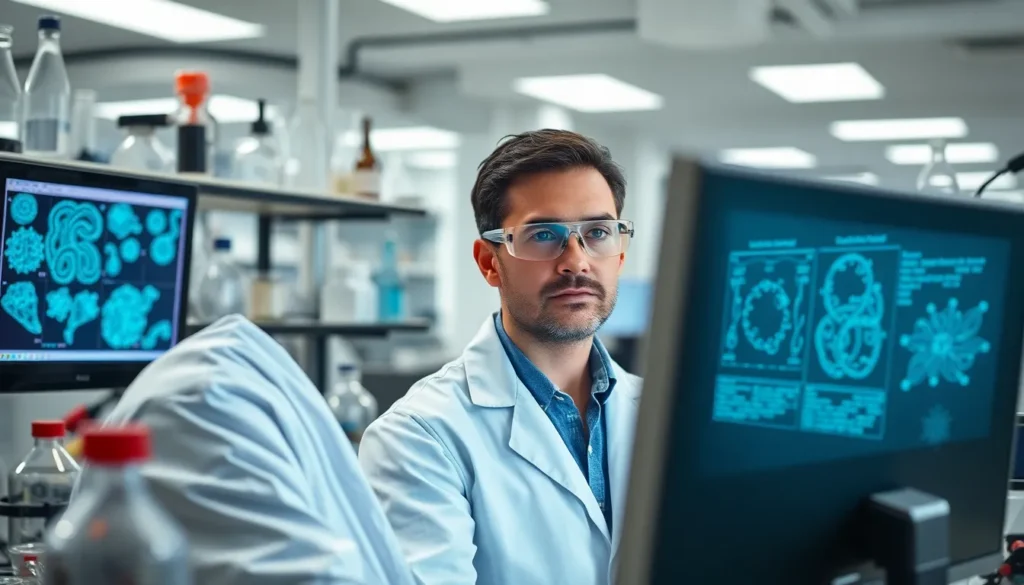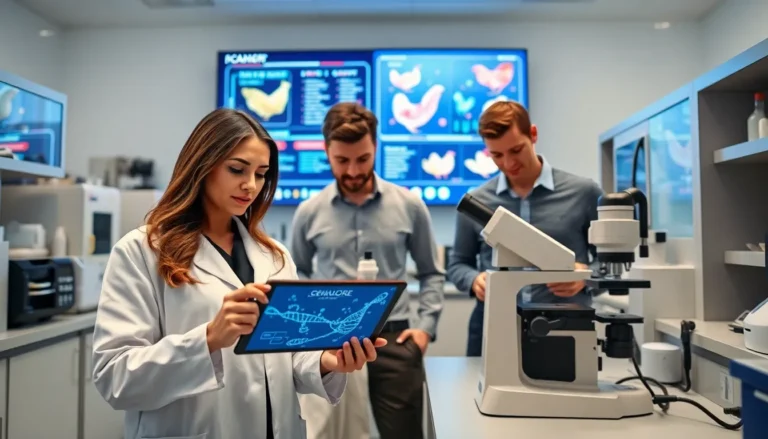In the age of rapid technological advancement, bioinformatics stands out as a vital field that bridges biology and data science. It harnesses the power of computational tools to analyze and interpret complex biological data, driving discoveries in genomics, proteomics, and beyond. This interdisciplinary approach not only enhances our understanding of life at a molecular level but also revolutionizes personalized medicine and drug development.
As researchers delve deeper into the intricacies of biological systems, bioinformatics becomes essential for managing the vast amounts of data generated by modern experiments. By employing algorithms and statistical methods, it allows scientists to uncover patterns, make predictions, and gain insights that were once unimaginable. With its growing importance, bioinformatics is shaping the future of healthcare and biology, making it a fascinating topic for anyone interested in the intersection of technology and life sciences.
Table of Contents
ToggleOverview Of Bioinformatics
Bioinformatics integrates biology, computer science, and mathematics to analyze biological data. This field facilitates the management and interpretation of vast amounts of information produced by genomic and proteomic studies.
Key Components
- Data Analysis: Bioinformatics employs algorithms and software tools to discern patterns within biological data. These tools examine sequences, structures, and functions of biomolecules.
- Genomics: In genomics, bioinformatics assists with the analysis of genomic sequences to identify gene functions and interactions. It supports applications such as genome assembly and annotation.
- Proteomics: Bioinformatics analyzes protein structures and functions, revealing relationships between proteins and their associated biological processes. Techniques include mass spectrometry data analysis and protein interaction network mapping.
- Personalized Medicine: Bioinformatics contributes to the development of personalized medicine by analyzing patient data and genetic information to tailor treatments. This approach enhances treatment efficacy and reduces adverse effects.
Applications
- Drug Discovery: In drug discovery, bioinformatics helps identify potential drug targets and optimizes lead compounds. It accelerates the screening process for new therapeutics.
- Disease Prediction: Bioinformatics tools predict disease susceptibility based on genetic profiles, allowing for early intervention strategies.
- Clinical Research: In clinical research, bioinformatics streamlines data management and analysis, improving research outcomes and enhancing reproducibility.
Bioinformatics continues to evolve, driving innovation in biological research and healthcare. Its interdisciplinary nature and application in various domains solidify its critical role in contemporary science.
Importance Of Bioinformatics

Bioinformatics plays a vital role in advancing various scientific fields, particularly in medicine, agriculture, and environmental science. By harnessing computational techniques, bioinformatics facilitates the analysis and interpretation of complex biological data.
Applications In Medicine
Bioinformatics significantly enhances medical research and patient care. It streamlines genomic sequencing, enabling the identification of genetic mutations linked to diseases. Applications include:
- Disease Diagnosis: Bioinformatics tools analyze genetic data, improving accuracy in diagnosing conditions like cancer and genetic disorders.
- Personalized Medicine: Treatments are tailored based on an individual’s genetic makeup, optimizing therapeutic outcomes.
- Drug Discovery: It accelerates identifying drug targets through computational modeling and simulation, facilitating quicker development of new therapies.
Applications In Agriculture
Bioinformatics transforms agricultural practices by fostering crop improvement and disease management. Notable contributions include:
- Crop Genetics: Analysis of plant genomes aids in selecting traits like drought resistance and pest tolerance, enhancing crop yields.
- Genetic Engineering: Bioinformatics supports the design of genetically modified organisms (GMOs) that withstand environmental stresses.
- Pathogen Detection: Rapid identification of plant pathogens through genomic data minimizes crop losses, improving food security.
Applications In Environmental Science
- Biodiversity Assessment: Analysis of genetic data helps catalog species, guiding conservation strategies and biodiversity preservation.
- Ecosystem Modeling: Bioinformatics tools model complex ecological interactions, aiding in the assessment of environmental changes.
- Pollution Monitoring: Genomic techniques identify microbial communities affected by pollutants, informing remediation efforts and environmental health assessments.
Tools And Technologies In Bioinformatics
Bioinformatics relies on various tools and technologies that facilitate the analysis of biological data. These include specialized software, databases, and algorithms designed to streamline data processing and interpretation.
Software And Databases
Bioinformatics software plays a vital role in data analysis, providing researchers with the necessary tools to manage large datasets. Key software includes:
- BLAST (Basic Local Alignment Search Tool): This tool identifies similarities between biological sequences, aiding in the identification of homologous genes or proteins.
- Geneious: A comprehensive software suite that integrates various bioinformatics tools for sequence alignment, primer design, and phylogenetic analysis.
- Galaxy: An open-source platform that allows users to perform data analyses through interactive workflows without requiring programming skills.
In addition to software, databases serve as crucial repositories for biological information. Notable databases include:
- GenBank: A comprehensive nucleotide sequence database maintained by the National Center for Biotechnology Information (NCBI).
- UniProt: A protein sequence and functional information database that provides a rich source of protein-related data for researchers.
- TCGA (The Cancer Genome Atlas): A project that provides an extensive database of genomic data related to different cancer types, facilitating cancer research and personalized medicine efforts.
Algorithms And Data Analysis
Algorithms form the backbone of bioinformatics, enabling researchers to apply mathematical and statistical techniques to analyze biological data efficiently. Prominent algorithms include:
- Hidden Markov Models: Used for gene prediction and genomic sequence analysis, facilitating the identification of regulatory elements and gene structures.
- Machine Learning Algorithms: These techniques, such as support vector machines and neural networks, uncover patterns in large datasets, improving accuracy in disease prediction and treatment outcomes.
- Next-Generation Sequencing (NGS) Analysis Pipelines: Automated workflows that process and analyze high-throughput sequencing data, streamlining genomic variant calling and transcriptome analysis.
Data analysis in bioinformatics encompasses a range of methodologies, including:
- Statistical Methods: These techniques assess the significance of biological data and can identify correlations or causal relationships within complex datasets.
- Computational Biology: This subfield combines computation with biology, utilizing simulations and modeling to understand biological processes at a molecular level.
- Visualization Tools: Software like R and Python libraries enable researchers to create visual representations of data, enhancing understanding and communication of complex biological insights.
The combination of software, databases, algorithms, and data analysis tools underscores the importance of bioinformatics in modern biological research, facilitating innovative discoveries and advancements across various scientific domains.
Challenges In Bioinformatics
Bioinformatics faces several challenges that can impact research outcomes and data interpretation. Two significant areas of concern include data integration issues and ethical considerations.
Data Integration Issues
Data integration poses a key challenge in bioinformatics, primarily due to the diverse sources of biological data. Researchers encounter difficulties merging genomic, transcriptomic, proteomic, and clinical data. Variability in data formats, standards, and quality complicates interoperability among databases. Incomplete datasets can hinder comprehensive analyses. Ensuring effective integration necessitates robust algorithms and standardized protocols that streamline data aggregation, enhancing the reliability of findings across multiple studies.
Ethical Considerations
Ethical considerations arise prominently in bioinformatics, especially concerning the handling of sensitive biological data. Issues include patient consent, data privacy, and potential misuse of genetic information. Safeguarding individual health information requires strict adherence to regulations, such as HIPAA in the United States. Additionally, questions regarding data ownership and the potential for discrimination based on genetic profiles necessitate comprehensive ethical frameworks. Addressing these challenges is vital for maintaining public trust and fostering responsible practices in bioinformatics research.
Future Trends In Bioinformatics
Bioinformatics is poised for significant advancements that will reshape various scientific domains. Several key trends are emerging as the field evolves.
Increased Use of Artificial Intelligence
Artificial intelligence (AI) plays a crucial role in bioinformatics by enhancing data analysis capabilities. Companies and research institutions increasingly utilize machine learning algorithms to process vast biological datasets. AI-driven tools can predict gene functions, identify disease markers, and optimize drug discovery processes with greater accuracy.
Expansion of Genomic Data Integration
Genomic data integration is becoming more sophisticated as researchers combine data from diverse sources. The integration of multi-omics data, such as genomics, proteomics, and metabolomics, facilitates a holistic understanding of biological systems. Advanced bioinformatics platforms streamline this integration, enabling comprehensive analyses that support personalized medicine.
Enhanced Focus on Precision Medicine
Precision medicine benefits greatly from advancements in bioinformatics. Tailoring treatments based on individual genetic profiles is becoming more feasible. Bioinformatics tools enable the analysis of patient data, improving treatment selection and monitoring outcomes. This trend leads to more effective therapies and better patient management.
Development of Real-Time Data Analysis Tools
Real-time data analysis tools are transforming how bioinformatics supports clinical decisions. Technologies such as cloud computing and big data analytics enable rapid processing of biological information. These advancements facilitate timely insights, improving patient care in clinical settings.
Growing Importance of Data Privacy and Ethical Standards
With the expansion of bioinformatics, data privacy and ethical considerations gain significance. Compliance with regulations such as GDPR and HIPAA becomes essential in protecting sensitive genetic information. Research initiatives increasingly focus on developing robust ethical frameworks to address these challenges, ensuring responsible data use.
Integration of Robotics in Bioinformatics Workflow
Robotics enhances efficiency in bioinformatics laboratories. Automated systems conduct high-throughput screening, sample processing, and data collection, maximizing productivity. This trend allows researchers to focus on complex analyses and interpretation, accelerating the pace of scientific discovery.
Evolution of Bioinformatics Education and Workforce Development
Educational initiatives in bioinformatics are increasing to address workforce demand. Universities and institutions are developing interdisciplinary programs that combine biology, computer science, and data analysis. These programs equip the next generation of professionals with the necessary skills to thrive in an evolving landscape.
The convergence of these trends underscores the transformative potential of bioinformatics in shaping the future of science, medicine, and technology. Continuous innovation in the field promises to enhance research capabilities and optimize patient care.
Bioinformatics stands at the forefront of scientific innovation bridging biology and data science. Its ability to analyze complex biological data not only drives advancements in genomics and proteomics but also enhances personalized medicine and drug development. As this field continues to evolve it will play an increasingly vital role in various sectors including healthcare, agriculture, and environmental science.
The integration of advanced tools and technologies will further empower researchers to uncover insights that were once unattainable. While challenges such as data integration and ethical considerations persist the future of bioinformatics looks promising. With the continued rise of artificial intelligence and real-time data analysis the potential for groundbreaking discoveries is limitless. Bioinformatics is truly shaping the future of science and medicine.










